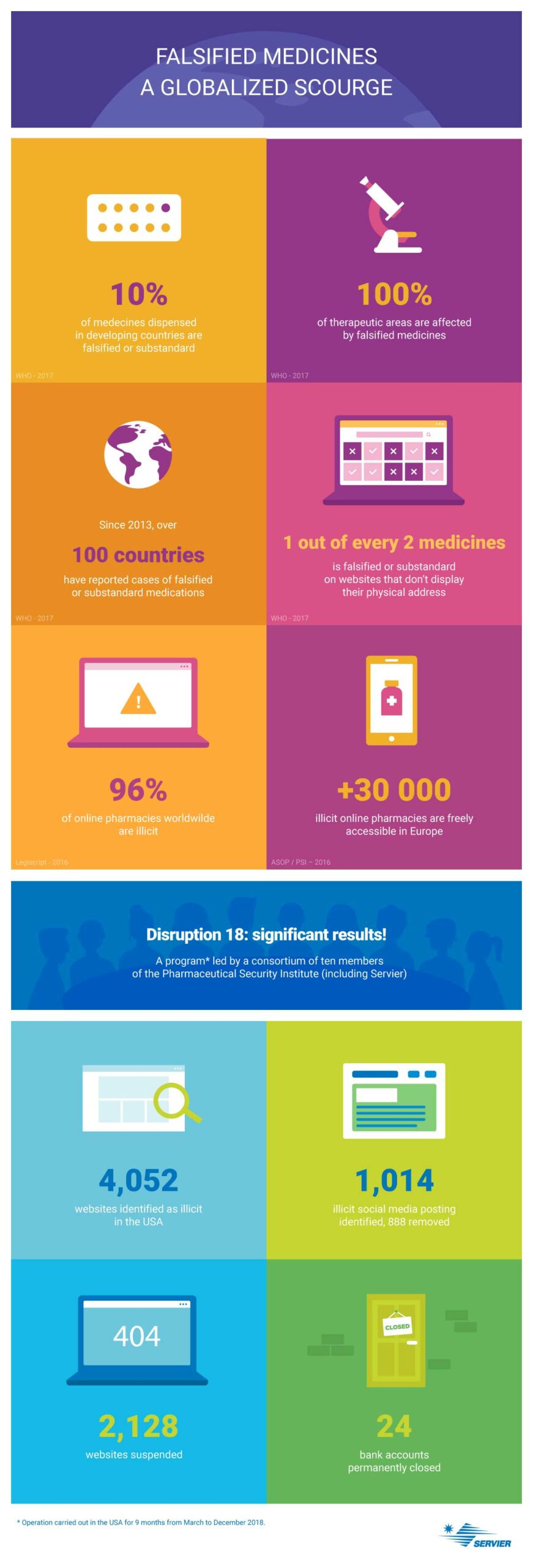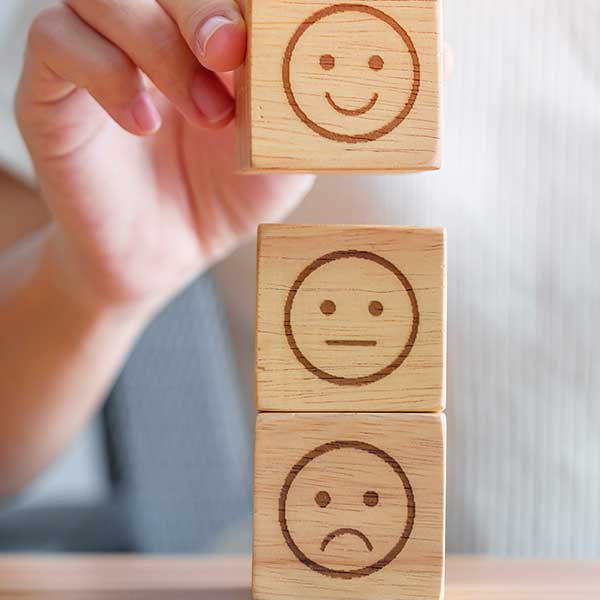The falsification of medicines is a real scourge. In recent years it has reached an unprecedented scale, with one in ten medicines sold in low- to middle-income countries being falsified or “substandard”, according to World Health Organization (WHO) estimates. However, efforts to fight this trade, which is more profitable than that of recreational drugs, are also intensifying.
The falsification of medicines is first and foremost a serious threat to public health and a danger to patients, with products found to contain, for example, no active principles, the wrong active principles, the wrong strengths, impurities, toxic substances, etc. The expected standards of quality, efficacy, and safety are not met. These products can cause major adverse reactions and complications – not just individually but also collectively, with the development of resistance.
June 6th, 2019 is World Anti-Counterfeiting Day and an opportunity to focus on the Servier teams on the frontline in the war against fake medicines.
3 questions for Wilfrid Rogé, Head of fight against falsification at Servier
Does counterfeiting affect Servier?
Everything is copied nowadays, and medicines are no exception. Like other pharmaceutical groups, Servier is also confronted with this scourge – one that can affect all therapeutic areas and potentially all countries of the world. The less a health care system is regulated, the higher the risk that counterfeiting will develop. While the industrialized countries are less affected, counterfeit products do succeed in penetrating the legal distribution chain. In addition, the counterfeiters use illicit online pharmacies to distribute falsified or unauthorized medicines. Because such trafficking challenges our values founded on providing patients with safe and high-quality products, Servier is taking action to detect suspected fake medicines as early as possible.
What happens when a counterfeit Servier product is detected?
Fake medicines are always sold without the knowledge of the patient – who is the victim and never the accomplice. It is really quite simple: we need to act on each suspicion as quickly as possible. Once a suspect medicine has been identified by a Servier Group subsidiary or third party (health professional, authority, etc.), a race against the clock begins to determine as rapidly as possible whether or not it is falsified. The teams at our production sites (Gidy, Arklow, etc.) and Technologie Servier (TES) play crucial roles in identifying fake products. We have a specific procedure in place for this, in which the role of each player is documented. As soon as a falsified product is brought to our attention, we inform the competent authorities so that all the necessary measures can be taken. We investigate in order to track down the illicit circuit and dismantle the networks. We also actively work with national and international police and customs authorities and take legal action against the counterfeiters. This procedure forms one of the cornerstones of our work.
What are we doing to fight this scourge?
Servier has long played an active role in the fight against fake medicines. The means at our disposal continue to improve, based on our experience and new technologies. We take a three-pronged approach: detect, prevent, and act. Detection involves our entire workforce, veritable sentinels who must report any suspicion of falsification that they may have. It also involves conducting analyses using the exceptional know-how of our colleagues at TES or our production sites.
Prevention involves awareness raising and training, not just of our employees but also external stakeholders, such as customs, police, and health authorities. In 2018, we held 43 training sessions for 2,000 external players and seven for 281 people in-house. Prevention also means safeguarding the supply chains by improving the traceability, identification, and tamper-proofing of medicines using the MATRIX program, and the immediate authentication of fake medicines using the Securistamp system in China, Russia, Ukraine, and Vietnam.
Finally, being proactive involves cooperating closely with other pharmaceutical companies and with the French, European, and international health authorities, whether as part of G5, EFPIA, Interpol, or WHO. One example of these synergies is the dismantling of a huge network of counterfeiters in China, which took place last year.
And our roadmap for tomorrow is ambitious: ramp up our surveillance strategy for medicines sold online, increase and improve the protection of our products, particularly through the use of new authentication systems, and continue our training program, notably in Africa, to give just a few examples.
Technologie Servier (TES) – a cutting-edge laboratory
The experts at TES, in Orléans, use the latest technologies to analyze suspect medicines. As the Servier Group’s weapon in the fight against falsification, they inspect suspect packs identified from around the world and assist investigations with their analyses of blister packs, tablets, and packaging items, for example.
The tool they use is impressive: a database in which the various specific aspects of some thirty Group medicines are modeled, according to their production site, method of manufacture, and the particularities of each production line of each Group plant. In just a few seconds, they can find out whether or not the product is genuine.
But the investigation does not end there. They use a video spectral comparator to visually analyze the packaging, and vibrational spectroscopy, magnetic resonance, and mass spectrometry to determine the identification profile of the counterfeit product (chemical composition: excipients, active pharmaceutical ingredient and its dosage).
Based on these data, a certificate of analysis is sent to headquarters so that it can take the necessary measures in conjunction with the health authorities.


